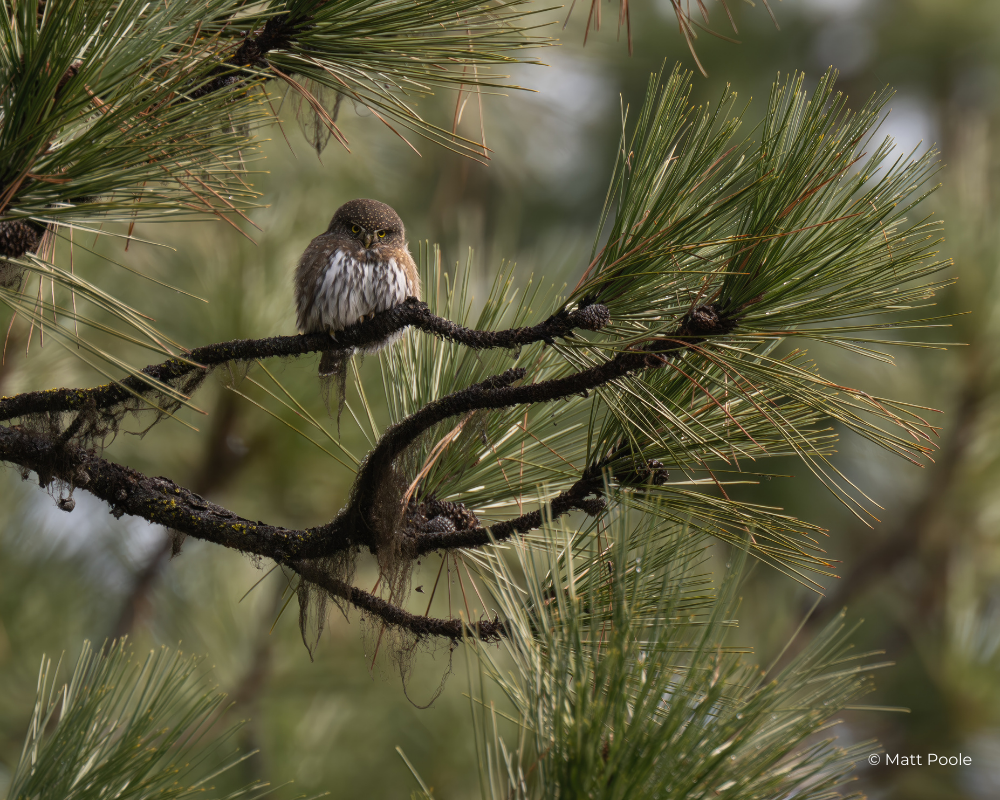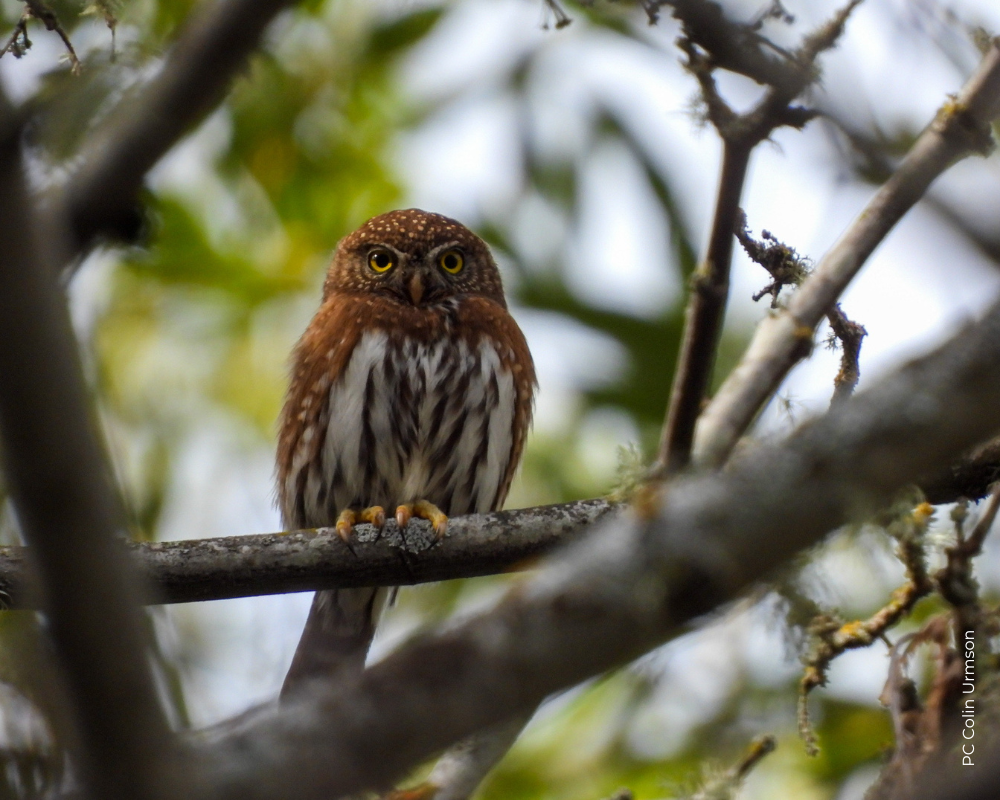Overview
The Northern Pygmy-Owl is a tiny owl (only slightly larger than Elf Owl) but a feisty predator, sometimes capturing prey up to three times their size or even larger! They eat mostly songbirds but also feed on mice, chipmunks, insects, and small lizards. Northern Pygmy-Owls are diurnal (hunt during the daytime), so they are easier to see than most owls, but they are so small that they often hide in plain sight. They may perch on the tops of a tree or an open snag but be overlooked or passed over as a songbird, but with a keener eye, the owl-like silhouette is noticeable. They sit quietly and motionless and surprise prey by seeming to come out of nowhere. Pygmy-Owls sometimes become prey for larger owls, diurnal raptors, and predatory mammals (i.e. weasels).
Pygmy-Owls reside in mostly coniferous forests but also in cottonwood, aspen, and mixed-conifer forests from the western US and Canada into Central America. They are found at mid-elevation in mountainous areas but also at sea level in other parts of their range. In winter, Pygmy-Owls move to lower elevations and sometimes even suburban residential areas hunting songbirds at backyard bird feeders. From Mexico to Central America, they reside in pine, oak, and scrub forests. Pygmy-Owls nest in holes in trees made by woodpeckers. They are not known to use man-made nest boxes, but more study is needed to be certain.
Pygmy-Owls are barred brown and white on top and brown-streaked below, with long tails, rounded heads, and bright yellow eyes and bill. They are often mobbed by songbirds, which help give their location away. However, they have ‘eyespots’ on the back of their neck (which may help deter some mobbing or predation from a sneak attack) and a small pair of tufts on the sides of their head raised only when threatened by a predator, such as a hawk. Both sexes make a series of “toots” when calling, and like other owls, they snap their bill when alarmed by a predator.




